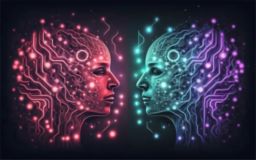
Generative AI has burst onto the scene, producing imaginative text, lifelike images, and even catchy melodies. While the outcomes can be astounding, it’s essential to grasp the underlying mechanisms. Forget about magic spells – generative AI relies on intricate algorithms and data, and comprehending its inner workings enables responsible usage, sidestepping potential pitfalls.
Important Concepts in Understanding Generative AI
| Concept | Description | Example | Importance |
|---|---|---|---|
| Statistical Mimicry | Generative AI learns patterns and probabilities from data, not true creation. | An AI trained on news articles might write a report, but it’s not truly understand the events. | Helps manage expectations and avoid misinterpreting outputs as sentient or factual. |
| Data Bias | If the training data is biased, the AI outputs can be biased too. | An AI trained on photos of celebrities might generate images with unrealistic beauty standards. | Awareness of data bias is crucial for ethical AI development and avoiding harmful outputs. |
| Hallucinations | When the AI encounters unseen data or makes statistical errors, it can fabricate details or generate nonsensical outputs. | An AI asked to write a poem about a cat might include a spaceship due to statistical association with “curiosity.” | Understanding hallucinations helps identify unreliable outputs and fosters responsible use. |
| Limitations | Generative AI excels at imitating, but it lacks human understanding and critical thinking. | An AI can write compelling marketing copy, but it can’t understand the ethical implications of the message. | Recognizing limitations prevents overreliance and encourages human oversight. |
| Human Collaboration | Humans bring judgement, ethics, and context that AI needs to be used responsibly. | A human editor can review and fact-check AI-generated content before publication. | Human-AI collaboration fosters responsible development and mitigates risks. |
So, what exactly does generative AI entail?
Here all about what is important to understand about how generative ai models work
- Statistical Imitation, Not Genuine Creation:
Generative AI doesn’t genuinely “create” from scratch. Instead, it analyses vast datasets, learning patterns and probabilities of words, pixels, or musical notes. Visualise it as a sophisticated imitator, capable of replicating styles and generating new combinations based on learned information.
- Biases and Misconceptions:
Remember, the AI mirrors the data it’s trained on. Biased data leads to biased outputs. Just like a parrot repeating inaccurate phrases, AI can “hallucinate,” inventing details or perpetuating harmful stereotypes if not trained on carefully curated material.
- Not a Substitute, but a Potent Resource:
Generative AI shouldn’t instil fear or misunderstanding. It’s a potent tool, not a replacement for humans. By comprehending its limitations and potential biases, we can utilise it ethically and responsibly, for tasks ranging from crafting marketing content to composing personalised music.
Here are some key points to bear in mind:
Transparency: Understand the origin of the data used to train the AI. Is it varied and unbiased?
Context is Crucial: Don’t accept AI outputs blindly. Verify, fact-check, and apply your own judgement.
Human Oversight: While AI excels at pattern recognition, humans provide critical thinking and ethical considerations. Maintain human involvement.
Continuous Learning: AI models evolve continually. Stay abreast of advancements and potential risks. By demystifying generative AI, we can leverage its potential positively, nurturing creativity, innovation, and comprehension, while mitigating risks and ensuring responsible development.


